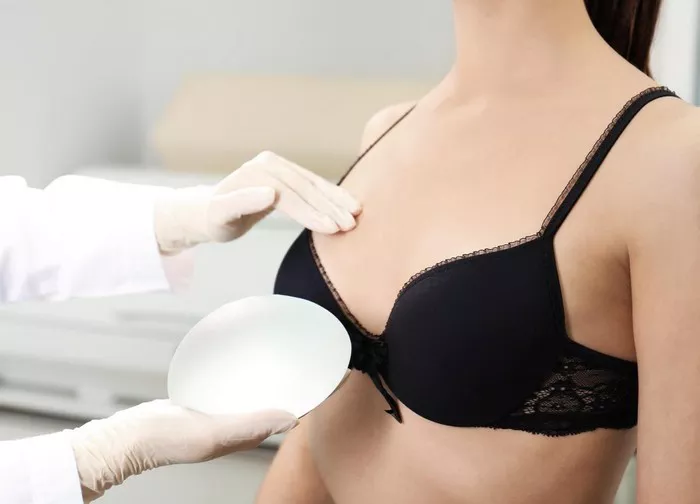Silicone implants are commonly used in various medical procedures, including breast augmentation and reconstructive surgery. These implants are favored for their natural look and feel. However, like any medical device, silicone implants are not immune to complications, and one of the most concerning issues is implant rupture. In this article, we will explore the factors and circumstances that can cause a silicone implant to rupture, as well as steps individuals with silicone implants can take to minimize the risk.
Understanding Silicone Implants
Silicone implants consist of a silicone outer shell filled with silicone gel or, in some cases, saline solution. The silicone gel-filled implants are the focus of our discussion, as they are more prone to rupture than saline implants. Silicone implants are used for breast augmentation, breast reconstruction, and occasionally in other cosmetic procedures.
What Is Implant Rupture?
Implant rupture refers to the breach or tear in the outer shell of a silicone implant, causing the silicone gel inside to leak into the body. Ruptures can be either “silent,” meaning they go unnoticed, or “symptomatic,” where physical symptoms or changes in the breast are evident.
Causes of Silicone Implant Rupture
Several factors can contribute to the rupture of silicone implants. It’s important to understand these potential causes to minimize the risk and address any concerns promptly:
Normal Wear and Tear: Over time, silicone implant shells may weaken and become more susceptible to rupture. This is a natural consequence of aging, and while it can occur, it is relatively rare.
Manufacturing Defects: In some cases, silicone implants may have manufacturing defects that compromise the integrity of the implant shell. These defects can make the implant more susceptible to rupture.
Physical Trauma: A significant cause of implant rupture is physical trauma or injury to the breast area. This trauma can result from accidents, falls, or other events that impact the chest. It is essential to protect the breasts from such trauma to reduce the risk of rupture.
Surgical Errors: Inexperienced or improperly trained surgeons may inadvertently damage the implant during the surgical procedure, increasing the risk of rupture. Choosing a qualified and board-certified surgeon is critical in preventing surgical errors.
Age of the Implant: Silicone implants are not intended to last a lifetime. The longer an implant has been in place, the higher the likelihood of wear and tear on the implant shell, potentially increasing the risk of rupture.
Compression During Mammography: While mammography is an essential breast cancer screening tool, it can exert pressure on the breast tissue, potentially causing implant rupture. It’s crucial to inform your healthcare provider about your implants before undergoing a mammogram, as they may use specialized techniques to minimize the risk.
Implant Quality: The quality and integrity of the implant itself play a significant role in its durability. Choosing implants from reputable manufacturers and following the manufacturer’s guidelines for implant care can help reduce the risk of rupture.
Extreme Temperature Changes: Sudden and extreme changes in temperature, such as exposure to very hot or very cold conditions, can affect the implant’s elasticity and potentially contribute to rupture.
Detecting Silicone Implant Rupture
Detecting a silicone implant rupture can be challenging, as it may be asymptomatic or present with subtle changes. Some signs that may indicate a rupture include:
Changes in breast shape or size
Breast tenderness or discomfort
Hardening of the breast
Uneven appearance of the breasts
Lumps or masses in the breast or underarm area
Regular follow-up appointments with a healthcare provider and routine imaging, such as MRI or ultrasound, can help detect ruptures early, even in the absence of symptoms.
Preventing Silicone Implant Rupture
While not all cases of silicone implant rupture can be prevented, several steps can help reduce the risk:
Choose a Skilled Surgeon: Select a board-certified plastic surgeon with extensive experience in breast augmentation and implant procedures.
Follow Post-Operative Instructions: Adhere to your surgeon’s post-operative care instructions, including restrictions on physical activities during the recovery period.
Regular Monitoring: Attend regular follow-up appointments with your surgeon and consider routine imaging to detect potential issues early.
Avoid Trauma: Be cautious to avoid physical trauma or injury to the chest area.
Implant Replacement: Understand that silicone implants have a lifespan and may need to be replaced after a certain number of years. Discuss this with your surgeon and follow their recommendations.
Conclusion
Silicone implant rupture is a concern for individuals who have undergone breast augmentation or reconstruction surgery. While it can be caused by various factors, including wear and tear, physical trauma, and manufacturing defects, the risk can be minimized through careful consideration of implant quality, surgeon selection, and post-operative care.
Regular monitoring and follow-up with a qualified healthcare provider are essential in detecting and addressing silicone implant ruptures early. By understanding the potential causes and taking preventive measures, individuals can maintain the integrity and longevity of their silicone implants and enjoy the benefits of their chosen procedure while minimizing associated risks.


